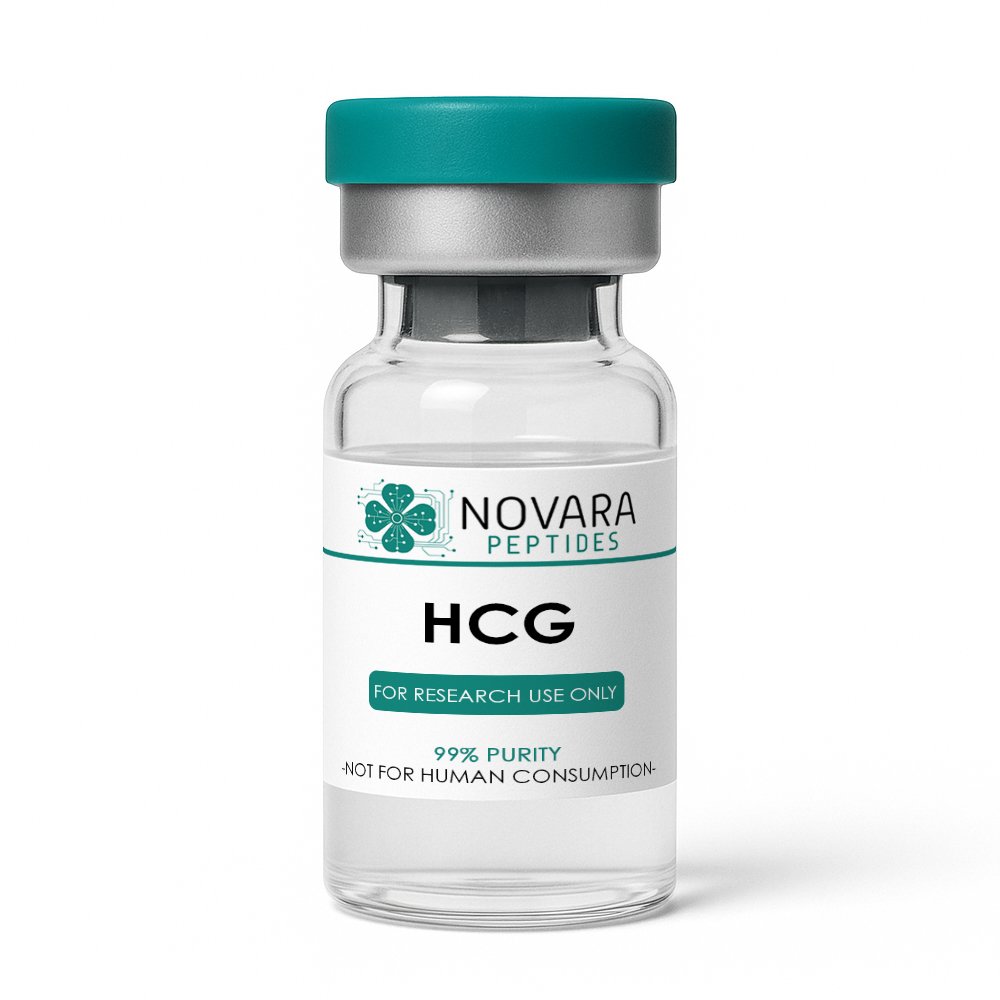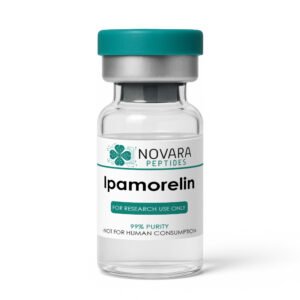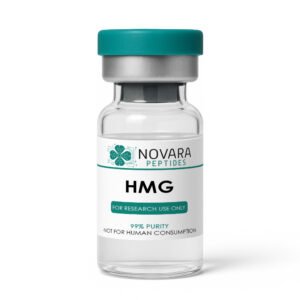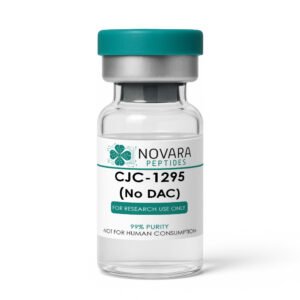HCG – 5000IU
$ 55.00
All products are for laboratory research purposes only. Not for human consumption, medical, or veterinary use. ION Peptides does not condone or support the use of peptides outside of controlled scientific research. By purchasing, you acknowledge that you are a qualified researcher or institution. You must be 21 or older




HCG (Human Chorionic Gonadotropin) Research Peptide
Research-Grade Glycoprotein Hormone
Tagline: Endocrine & Fertility Research
Product Description
HCG (Human Chorionic Gonadotropin) is a naturally occurring glycoprotein hormone produced during pregnancy by the placenta. For research use, recombinant or purified HCG is used to investigate reproductive physiology, luteinizing hormone (LH) signaling, and endocrine system regulation.
Researchers use HCG in preclinical models to study testosterone production, ovarian follicle development, and corpus luteum maintenance. Its ability to mimic LH makes it a valuable tool for research in fertility, hypogonadism models, and endocrine function.
For Laboratory and Scientific Research Use Only. Not for Human Consumption.
Why Researchers Choose HCG
High Purity: ≥98% purity ensures consistent and reliable results.
LH Mimetic Activity: Binds to LH receptors and stimulates steroidogenesis.
Stable Lyophilized Form: Long shelf life for laboratory storage.
Versatile Applications: Used in reproductive, endocrine, and metabolic research.
Batch Verified: Each lot tested for identity and potency.
Important Note
For laboratory and scientific research only. Not for human consumption, veterinary use, or diagnostic purposes.
| Chemical Nature | Glycoprotein hormone (heterodimeric) |
| Molecular Mass | ~36.7 kDa |
| CAS Number | 9002-61-3 |
| Form | Lyophilized powder |
| Shelf Life | 24 months (lyophilized) |
| Intended Use | For preclinical and in vitro research only |
| Storage | 2–8 °C (short term), -20 °C (long term); refrigerate after reconstitution |
Research Applications
Reproductive Physiology
HCG mimics LH, stimulating Leydig cell testosterone production and ovarian follicle maturation in research models [1].
Corpus Luteum Support
Used to study maintenance of the corpus luteum and progesterone secretion in early pregnancy research [2].
Endocrine Function & Feedback Loops
Helps model pituitary–gonadal axis regulation, LH receptor signaling, and feedback mechanisms [3].
Fertility & Hypogonadism Studies
Widely applied in preclinical investigations of male and female infertility and hypogonadal conditions [4].
References
Cole LA (2012). Biological Functions and Clinical Applications of HCG. Reproductive Biology and Endocrinology.
https://rbej.biomedcentral.com/articles/10.1186/1477-7827-10-24Licht P et al. (2007). Role of hCG in Human Pregnancy. Molecular and Cellular Endocrinology.
https://www.sciencedirect.com/science/article/pii/S0303720707000536Rull K et al. (2015). hCG and LH Receptor Signaling Pathways. Endocrine Reviews.
https://academic.oup.com/edrv/article/39/5/549/5036715Matsumoto AM (2013). Hormonal Control of Male Hypogonadism Models Using hCG. Journal of Clinical Endocrinology & Metabolism.
https://www.hormonebalance.org/images/documents/Coviello%2005%20hCG%20maintains%20Test%20JCEM.pdf
Mechanism of Action (How HCG Works)
LH Receptor Activation: Binds to LH/CG receptors in gonadal tissue, triggering cAMP production and activating steroidogenesis [Rull 2015].
Stimulation of Testosterone Production: Activates Leydig cells to synthesize testosterone, useful for hypogonadism research models [Matsumoto 2013].
Ovarian Follicle Maturation: Promotes follicle growth and ovulation in preclinical studies [Cole 2012].
Corpus Luteum Maintenance: Sustains progesterone production necessary for implantation studies [Licht 2007].
Feedback Regulation: Provides data on hypothalamic–pituitary–gonadal axis feedback mechanisms [Rull 2015].
References
Cole LA (2012). Biological Functions and Clinical Applications of HCG. Reproductive Biology and Endocrinology.
https://rbej.biomedcentral.com/articles/10.1186/1477-7827-10-24Licht P et al. (2007). Role of hCG in Human Pregnancy. Molecular and Cellular Endocrinology.
https://www.sciencedirect.com/science/article/pii/S0303720707000536Rull K et al. (2015). hCG and LH Receptor Signaling Pathways. Endocrine Reviews.
https://academic.oup.com/edrv/article/39/5/549/5036715Matsumoto AM (2013). Hormonal Control of Male Hypogonadism Models Using hCG. Journal of Clinical Endocrinology & Metabolism.
https://www.hormonebalance.org/images/documents/Coviello%2005%20hCG%20maintains%20Test%20JCEM.pdf
Related products
-
Ipamorelin
$ 29.00 – $ 42.00Price range: $ 29.00 through $ 42.00 Select options This product has multiple variants. The options may be chosen on the product page -
CJC-1295 (No DAC)
$ 29.00 – $ 49.00Price range: $ 29.00 through $ 49.00 Select options This product has multiple variants. The options may be chosen on the product page -
BPC-157
$ 26.40 – $ 39.00Price range: $ 26.40 through $ 39.00 Select options This product has multiple variants. The options may be chosen on the product page





